Halloween is nearly here and the Goonhammer staff are getting into the spirit with all things spooky. In this roundtable, we’re talking about some of our favorite horror video games, but with a twist – these are all games published within the last 10 years. Yeah, we all know about Silent Hill and Resident Evil, but what’s more recent that scared the piss out of you, and why should we play it?
Subnautica

Platforms: PC, Xbox, PlayStation, Nintendo Switch
![]() TheChirurgeon: Subnautica is one of the scariest games I’ve played in a long time. The general premise is simple: You’re a survivor of a ship that crash lands on an alien planet, the surface of which is mostly covered with water. From there your mission is to explore, find the other survivors, and cobble together the resources you need to escape the planet. It’s not actually a horror game – it’s an exploration, resource collection, and survival game.
TheChirurgeon: Subnautica is one of the scariest games I’ve played in a long time. The general premise is simple: You’re a survivor of a ship that crash lands on an alien planet, the surface of which is mostly covered with water. From there your mission is to explore, find the other survivors, and cobble together the resources you need to escape the planet. It’s not actually a horror game – it’s an exploration, resource collection, and survival game.
The game’s horror comes from two areas: the first being the overwhelming sense of isolation you feel as you try to find other survivors or, in some cases, piece together what happened to them in their final moments. And the other is the array of massive, predatory alien lifeforms dwelling in the depths of the game’s oceans, ready to attack and eat you for daring to get too close. The game does a fantastic job of making you feel small, alone, and in peril when you’re in the dark a thousand meters below sea level and you suddenly hear the roar of a distant leviathan that has seen the lights of your submarine. And you know that in order to ascend off the planet, you’ll first need to descend deep into its depths.
If there’s anything that would stop me from recommending Subnautica, it’s that the game has some insane bugs and glitches even years after release, but many of these are cleaned up in the sequel, Below Zero. Though pretty much a better game in most respects, Below Zero is not nearly as scary as the first game, though it has its moments. Subnautica isn’t a Metroidvania game by any stretch, but I think it does a fantastic job of making you feel the way Metroid wants you to feel – alone on an alien world, surrounded by hostile predators in the dark tunnels that run miles below the planet’s surface as you try to make something of the alien technology left behind by a dead species.
A Plague Tale: Innocence
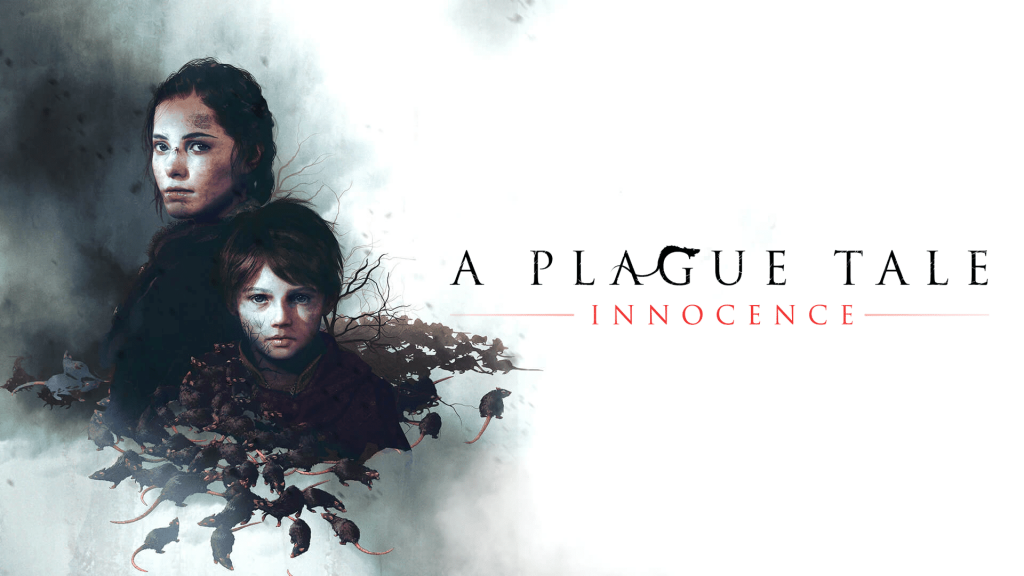
Keewa: A Plague Tale: Innocence very cleverly explores a time-honoured theme, perfectly tailored to send primeval electric shocks up and down the nerve-endings of every adult: Cute children are in distress. Siblings Hugo and Amicia are born to a noble family of landed knights in Aquitaine during the Hundred Years War. Amicia grows up strong and self-assured, but poor Hugo is afflicted from infancy with a mysterious disease, the progress of which their alchemist mother is desperately both seeking to slow and keep a secret from the marauding Inquisition scouring the land in search of tainted individuals to put to the fires.
After an Inquisitorial assault on their home leaves their father dead and their mother captured, the pair must flee into the countryside, finding that the Black Death is tearing a bloody swath across a kingdom at war. At once, these two relatively sheltered and privileged children are in deep shit. What’s worse, the stigma surrounding Hugo’s illness leads the villagers to shun and flee from them when they seek help. There are also many, many, rats running around. Perhaps too many.
This would all be relatively so-so if the developers had held back or pulled their punches, but they did not, Amicia and Hugo traverse some of the most disturbing environments I think I’ve ever seen in a game. A battlefield in the aftermath, littered with mutilated corpses, great swarms of black rats feasting on the dead. A farmstead in the black of night, cattle slaughtered and rotting in the fields, our heroes huddling in the pool of light cast by a torch to keep the ever-present rats at bay. There’s something particularly spine-tingling about maneuvering a five-year-old child through the bowels of a twisted gothic cathedral in order to rescue his mother from one of the torture cells, which are of course replete with the gory remnants of recent violence, including bodies still locked into the cages where they died.
That the entirety of our group of heroes (the siblings are joined by other children – two thieves, a scholar, and a blacksmith) somehow serves to make guiding them through these visions of hell-on-earth even more disquieting, and when they die their screams as they call out for one another are very effective at making you feel their terror.
Since becoming a parent a few years ago, I’ve found that I’m hyper-sensitive to any depictions of children in any kind of distress, in ways that I definitely wasn’t before. There are plenty of scenes in films where, for example, a village is under attack by some marauders or what-have-you. Often in these sequences directors will pop in a shot of a child wandering amid the carnage, calling out for their mother. Before becoming a father this was no big deal, but since my son was born, it’s as though my brain has been rewired to view things like this as extremely emotionally affecting, as though a primitive urge to empathise and protect has been activated in my brain.
Maybe that’s why, when Hugo desperately calls out for his sister as she’s eaten alive by a swarm of rats for the hundredth time, I find it so scary.
Forewarned

 PantsOptional: Last year I gave big ups to Phasmophobia, which came out of the gate strong as hell. Naturally this resulted in a slew of imitators, none of which have really managed to catch the same lightning in a bottle. One of them, though, grabbed my attention in a big way.
PantsOptional: Last year I gave big ups to Phasmophobia, which came out of the gate strong as hell. Naturally this resulted in a slew of imitators, none of which have really managed to catch the same lightning in a bottle. One of them, though, grabbed my attention in a big way.
Forewarned, available on PC/VR through Steam, revolves around a team of archaeologists who have uncovered an ancient tomb which they’re investigating and also presumably robbing blind to sell to the British Museum. The tomb is haunted by one of five ancient spirits which are technically named the Mejai but you’ll call them that for about a minute before just calling them mummies like everyone else. The first half of the game is similar to Phasmo; you have to go around a procedurally generated map and collect evidence like spirit box responses or radioactivity (?!) in a spooky game of Guess Who in order to correctly guess exactly which mummy is haunting the joint. During this part you’re pretty safe aside from the occasional snake or Indiana Jones style deathtrap. Once you know the mummy’s identity you can use that to unlock the inner tomb and find the mummy’s sarcophagus and treasure.
This is where Forewarned flips the script. Once you take the treasure, you officially enter the Danger Zone. The exit to the map locks shut, the mummy takes physical form, and the hunt is on until you can either find the lever to unlock the escape or the mummy wins. Each mummy has different traits in this form which tend to balance out; one has very poor sight but great hearing, while another is completely invisible but will stop in its tracks if you talk to it.
There are some other moving parts involved, but for me this is the core. It’s like a roller coaster. For the first half, you climb the lift hill, getting a little freaked out by the creepiness of the tomb as well as the anticipation of what’s to come. Then comes the moment of no return when you grab the treasure, like the hang and sudden drop of the coaster, and there’s no going back. You ride the chaos until the end.
The moment that sold the game for me, the absolute brown pants time? Talking quietly to my friend, trying to coordinate our escape, when I saw their character come into the same room and start walking toward me. I told them we should go down a certain hallway, and they agreed – and then they came in through a door on the other side of the room, while in front of me the same friend had almost reached me…
Ah. I see. Well played, mummy.
Faith: The Unholy Trinity
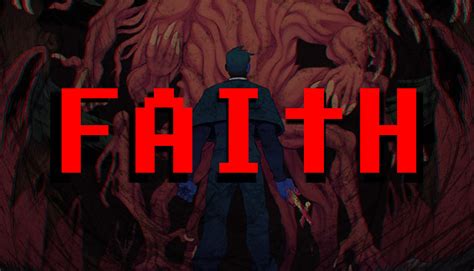
Marcy: I turned 40 this year, and a lot of that anxiety has come with some moments of reflection on the things I’ve actually lived through and seen. One that’s actually somehow becoming more and more relevant to me is the Satanic Panic of the 80s, which seems to be making quite the comeback these days. While that sucks ass, it has made the Faith series of games a somewhat comforting experience, which is a weird thing to say about a game that is truly unsettling in its simplicity and horror. Faith relies heavily on the 8-bit aesthetic, not just in graphic quality but in sound design – showcased in truly strange and unsettling rotoscoped cutscenes – but also on simplistic gameplay that heightens how powerless you actually are. The game recently released its third chapter, and all 3 combine for a huge amount of content to cover. They’ve also turned Faith into one of my absolute favorite horror games in recent memory.
Faith uses a lot of sneaky techniques to create a sense of horror that escapes the usual: there aren’t many jump scares, or shock for the sake of shock, but developer Airdorf knows how to tie in the ideas of body horror and existential dread to that of demonic possession. One thing that changes over the course of the chapters is the concept of whether or not the events that are happening are real or not: are these actual demonic possessions, or is this, like the Satanic Panic, people inflicting harm on others in the name of a misguided moral outrage? John, the protagonist, is shockingly weak in both game mechanics and in spirit, with much of the story grappling with his feelings of inadequacy, faith, guilt, and shame.
When Faith: Chapter 1 first released, a lot of the attention was directed to how vague and mysterious it was, but with Chapter 3 a lot of that is more ‘the story wasn’t fully here yet’, not the sort of vague ‘this is meant to inspire lots of YouTube theory videos’ phenomenon that plagues mediocre horror games these days. Faith very clearly has a story that requires players to invest in, to question the truth, to explore options and see what comes of them, but a lot of that wasn’t possible without the third chapter.
Faith is, quite literally, a game about faith. What it means to have it, to lose it, and to invest in it. While many horror stories rely on breaking faith or even ridiculing it, Faith breathes fresh air into the concept, and not twisting or toying with it makes it a game that I find myself not just wanting to replay, but also one I like to revisit mentally, to think about how it plays with ideas that few other games, let alone horror games, do.
And also, it’s just rad to hear that 8-bit audio voice go MORTIS when you die.
Anatomy

Swiftblade: In 2014, a weird little game called P.T was released on the PlayStation store to no fanfare. As I’m sure you are familiar with by now, P.T was a demo for the now canceled “Silent Hills” by Hideo Kojima. Despite being only a demo, P.T took the world by storm and popularized a sub-genre of P.T-inspired “Haunted House” video games. These games eschew combat and enemies as a gameplay function in favor of focusing on exploration and puzzle solving in a spooky scary environment. While games like the Layers of Fear series have been chasing the P.T dragon, no game has made me feel as much dread in the act of exploration as Kitty Horrorshow’s Anatomy.
Kitty Horrorshow is a one-woman indie developer who has released several unique horror games in the past few years on itch.io as well as her Patreon. Her games are strange, short, and experimental, and visually they look like something out of the Playstation One era of gaming. While I am talking about Anatomy specifically here, I want to take a moment to say that if it interests you at all, you should check out her other games as well. Anatomy currently costs three dollars, but her other games are free.
On to Anatomy itself, if you know nothing about this game you should absolutely go in as blind as possible. The premise of the game is fascinating and the less you know the more that premise will stick with you. What I can say is that Anatomy does something better than any game I have played since P.T: fill me with a sense that, even though no scares have happened yet, I’m overcome with a dreadful feeling that I do not belong here.
I remember walking around the hallway loop for the first time in P.T, opening the door to the exact same hallway again, and just being immediately overwhelmed with fear of the wrongness of this impossible architecture. I could barely play the game any further, and once the scares started ramp up I actually had to hand the controller off to a buddy. Even before the scares, the atmosphere of that hallway itself had me afraid, and that’s what I remembered best about P.T.
When I first fired up Anatomy and walked through the dark hallways of its house, I had no reason to be afraid at all. It was a dark house, but a normal one. But that awful feeling you get when you’re walking around your house in the pitch dark, and it’s all quiet, and you’re alone? Yeah, just that. As Anatomy goes on, the tension doesn’t get any better, it just gets worse and worse right on through to the end.
Lots of games try to create that same memorable, horrifying, atmosphere that P.T left us with eight years ago, and for all that effort few have succeeded nearly as well as Anatomy has. Go buy it and support Kitty Horrorshow, it’s three bucks and barely takes an hour from start to finish. Play it alone, in a dark room. Let it sit with you when you’re done with it. Enjoy that walk from the computer to the bedroom in the dark hallway of your home, I’m sure there’s nothing to be scared of.
Inscryption
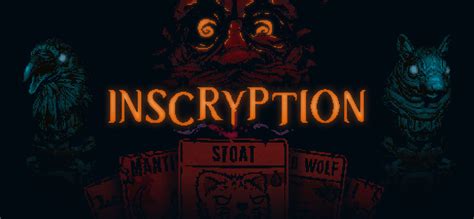
Josh: Inscryption is a game that, if I talk about it in-depth, it’ll spoil a lot of what makes it so damn great, so I’m going to give it my best shot not to do that.
On its surface, Inscryption is a rouge-like deck-builder dungeon-crawler that is absolutely charming and dripping in atmosphere. You are stuck in a cabin, with a darkness-drenched game master who wants to take you through the sinister world he’s created.
Inscryption’s card mechanics are simple, particularly if you’re a seasoned card-gamer, but they are presented in a way to enhance the tone, the foreboding horror. You don’t simply sacrifice a card to summon another, you must watch them shake in fear as you hover over them. You don’t upgrade a card: you place them upon a blood-stained altar to offer up their essence to another. You aren’t combining two cards together to improve them: you’re physically stitching them together.
You are dragged along the game-master’s dark world, thrown into scenarios, and forced to make choices while trying to survive to the end of the game, facing bosses and eventually the game-master himself. All of your encounters are narrated by a throbbing, baritone thrum that shook my headphones the first time I played.
All of this is scored with a fantastic soundtrack that harmonizes with the game as it progresses, with the simple rustic guitar playing idly in the background progressing to a sudden wind-blowing shriek that plays as you step into a deadly encounter on the road.
All of it is kept fresh with twists and turns in the narrative that open the game up more and more as you progress, until it barely feels like the same game anymore. It gripped me in a way I simply wasn’t anticipating, even as a long-time Daniel Mullins fan. His ability to weave the narrative with his own brand of experimental weirdness is unmatched, and I was hopelessly unprepared for the emotional gut-punch the game delivered in its closing sequence.
Mullins is a big fan of entering game jams, and his itch.io page is full of concepts and ideas – some of which have made it into full games of his, including Pony Island and Inscryption. If you’re looking for a taste of his particular brand of game design weirdness, you should definitely check it out.
The Quarry
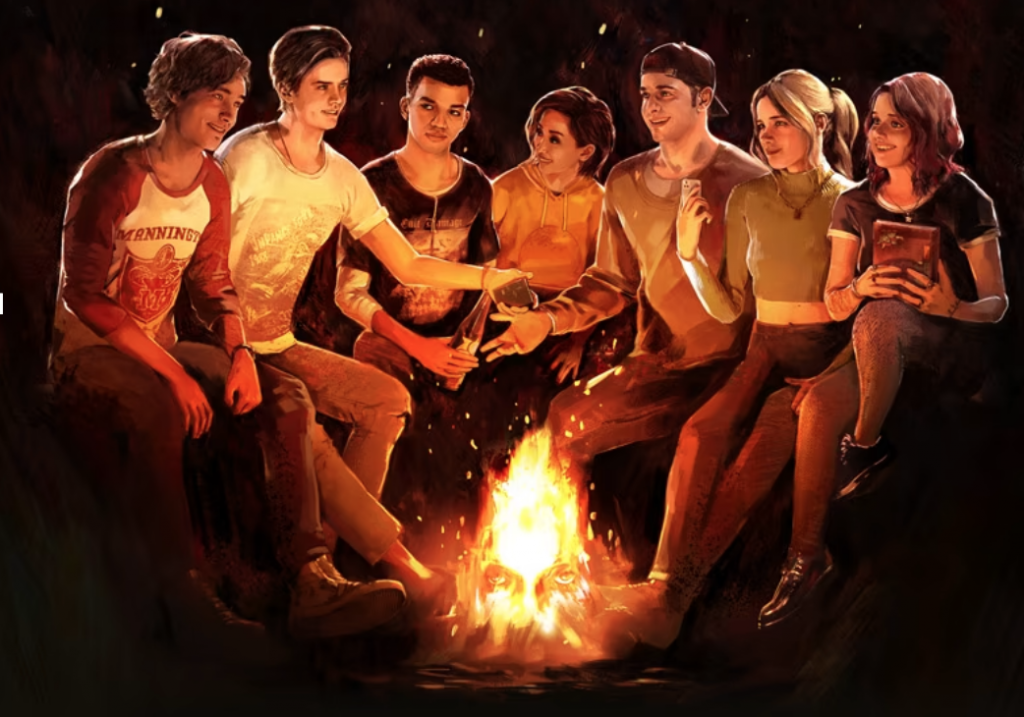
Mugginns (Michael O): I haven’t played this type of game before so I was really excited to get into it. I’m doing a ‘Halloween challenge’ where I watch a horror movie every day in October, so I had to get into a video game too. I will say – I’m not sure how far in the game I am, I think Chapter 5, so I haven’t finished it, but I think a lot of people would like it and it’s on sale in various places right now.
The Quarry is an interactive horror video game – you make choices, occasionally move around and look at stuff, and do quick time events (QTEs). It’s not a game where you’re going to circle strafe demons and blow them away. To be honest, the only other game that I’ve played like it is the (GOAT) Walking Dead series by Telltale Games. While I love those games, they’re a bit older and definitely have a totally different vibe. The developer, Supermassive, has made games like this before – Until Dawn and the Dark Pictures Anthology.
The Quarry uses a facial capture tool that makes the game look like a movie. There are a lot of familiar actors – David Arquette, Ariel Winter, Brenda Song, Lance Henrisksen, and Ted Raimi, and they use these actors really well with facial capture. I’m reminded of LA Noire, the first time I remember something like this being used.
The game takes a lot from 80’s slasher films. Lots of tropes, tons of tripping over roots (you can try to avoid this with QTEs), and relationship drama. There’s a ton of buildup until the part where you see the actual horror, and then it really pops off. Overall, the game is really dark – lighting-wise – which of course adds to the suspense and horror. I am playing on my PC but using a controller, because I like it for the QTEs.
From what I’ve read, there are 186 different endings. Throughout the game so far there are decision points where you make choices and the game shows you the different ‘paths’ that you’re taking. Depending on what choice you make, certain characters may die or live, may or may not help each other out later, etc.
Besides just making choices, moving around, and doing QTEs, there are also things to look at and find – clues to the overall mystery. There are also tarot cards that you find, and in between chapters you talk to a seer who gives you hints on the future with little scenes in a crystal ball (I don’t ever remember them, but I’m sure more savvy gamers will get more out of it).
Overall I’m excited to finish playing this game and figure out the mystery – check it out!
Evil Within 2
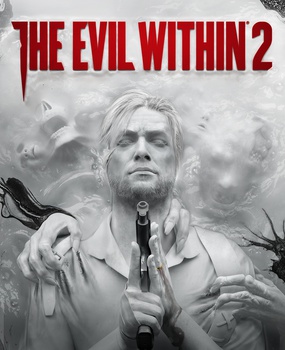
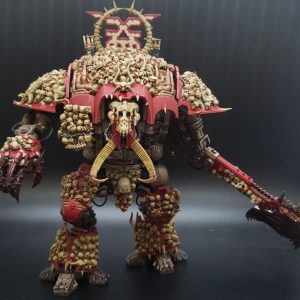
Norman: There’s kind of been a dearth of good action-focused survival horror in the past 10 years. Most modern horror games have skewed towards alternative gameplay mechanics like stealth in order to hammer home a feeling of helplessness and powerlessness. These developers are all cowards. In recent years Resident Evil is the only real triple-A series keeping the genre going. However, in 2018 we got a gem in the genre in the form of Evil Within 2.
Now, the original Evil Within was a perfectly fine game, but it was just that: fine. Leading up to its release horror fans were buzzing with excitement. It marked the return of Shinji Makami (director on Resident Evil 4, sometimes considered one of the best games of all time) to the horror genre, and he was working with Bethesda, who were just 3 years out from having released Skyrim (the first time). It was poised to set the gaming world on fire.
It uh, well it didn’t. Sitting at a score of 75 on metacritic, the game released and didn’t make a ton of impact. Like I said, it’s not bad, but as my dad would like to say when I brought home tests with similar scores, I expected more from it. But worry not dear reader, because for some god damn reason Zenimax approved a sequel to Evil Within with the creatively titled Evil Within 2.
The original Evil Within played much as you’d expect for a horror game released in 2013. You snuck around, scrounged for ammo, and oscillated between stealth action segments and full-blown shooting galleries designed to eat up your resources. Also there was, of course, a bow-type weapon, as was the style at the time (like 4 other games released that year with prominent bow gameplay, it’s kinda wild). Where Evil Within shined was its art direction. Everything looked weird and brutal; barbed wire and blood were big themes which were coupled with some nifty and memorable enemy design (Take a look at The Keeper and tell me some sorta safe-headed butcher wouldn’t stick with you).
Evil Within 2 expanded on the original’s gameplay formula in a couple ways. The biggest change being that it jumped to larger open spaces to play in, featuring side quests in those spaces and spooky places to explore. This changed the entire vibe of the game. It meant that instead of walking through a fun house with paced scares, there were scares that were left lying, waiting for you to come find them. There’s a segment that’s completely missable where a weird spider woman attacks you in a weird abandoned house that is completely optional. Stuff like this makes the world feel much more alive.
The game also kept the interesting art direction. The visual theme of Evil Within 2 was: candle wax. It featured a lot of goopy melty figures that featured a very unique silhouette. Another thing this did was it made a lot environments and enemies a stark white tone, which was a huge change from all the grit and grime of the games contemporaries, or even its predecessor.
All in all, this game did not set the world on fire. It was more positively received than the first, but quietly slipped under the pop culture radar. That said, I think it’s one of the best action horror games to come out in the last 10 years, and is very much worth your time.
Oh man that’s a lot of ways to look at different types of ghosts on the computer. Thanks to all of our contributors for their suggestions about games I’m never gonna play because they’re too scary.


